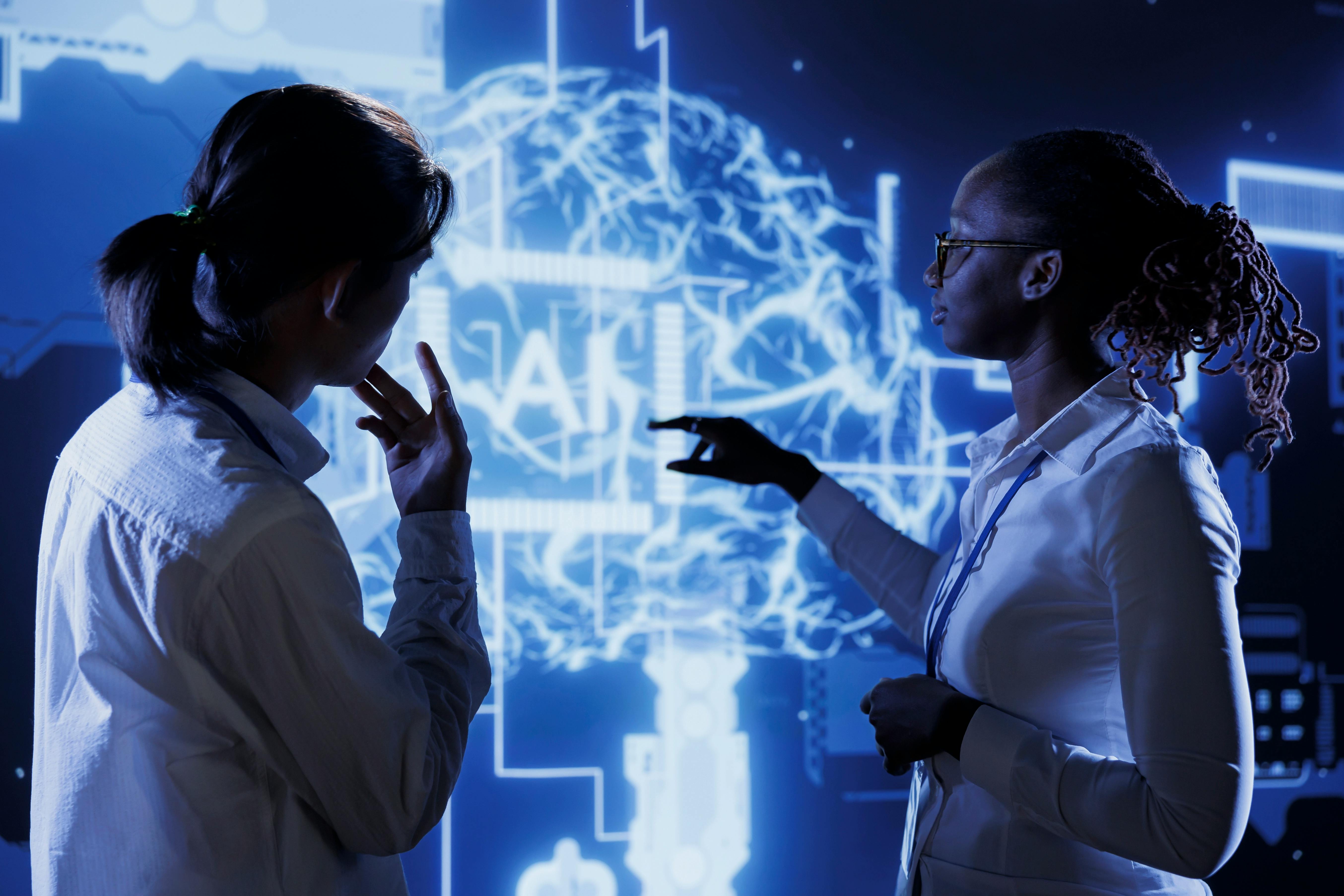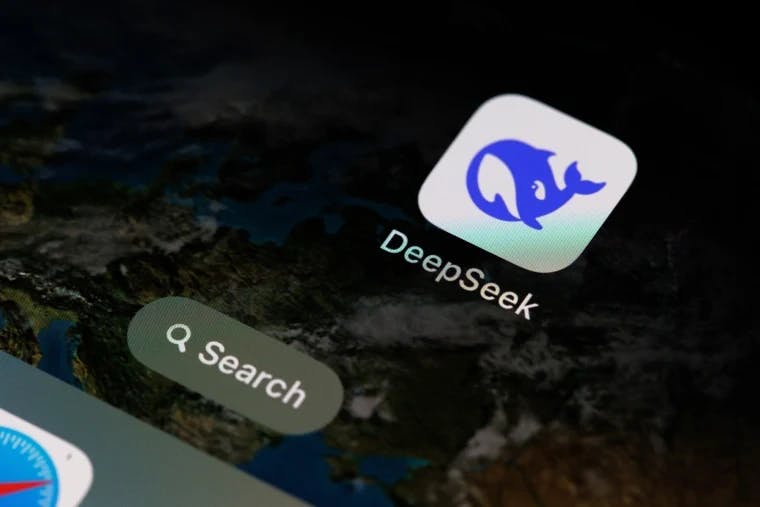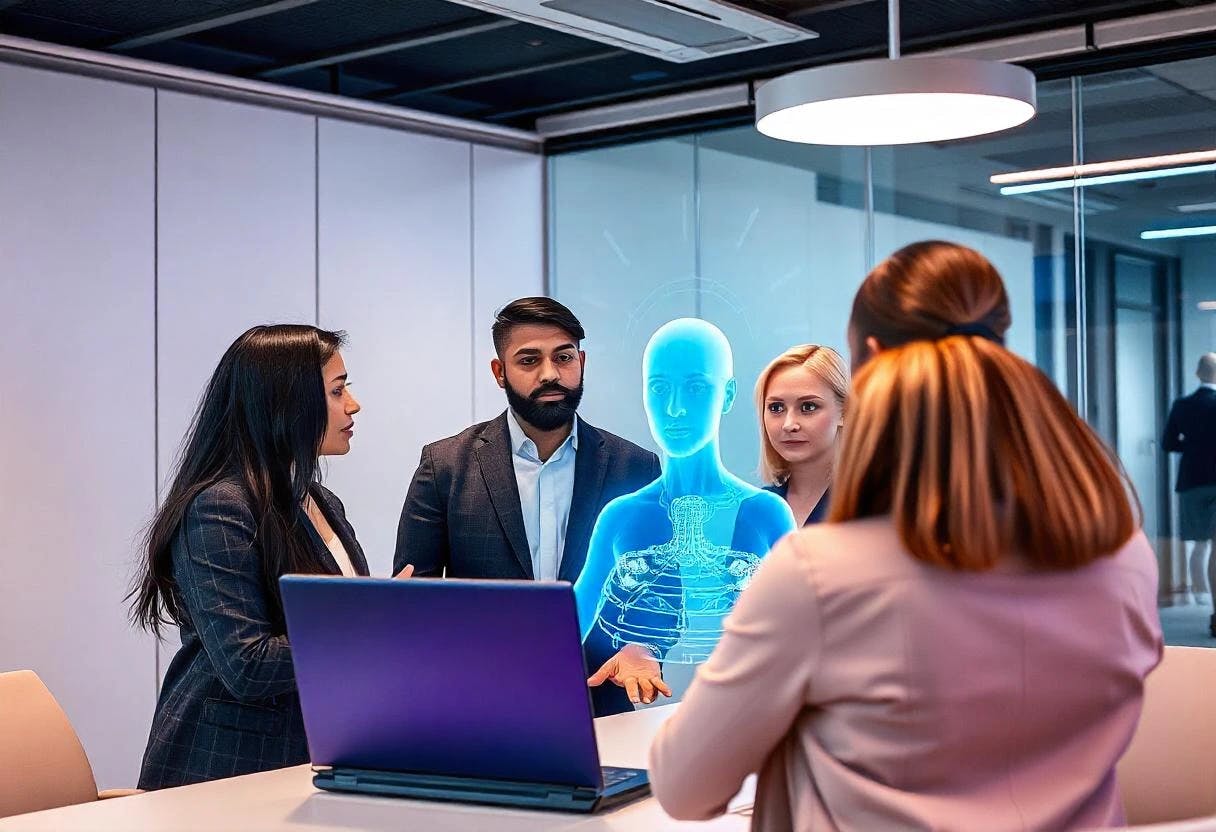
How Generative AI Converts Text into AI Art Masterpieces
At the heart of the new trends in artificial intelligence lies an extremely intriguing fusion point between generative models and artistic expression. In this blog, we will explore Generative AI, tracing its path from text to art. We will uncover the processes involved, possible uses, challenges, and the future of this revolutionary movement in creativity.
Metamorphosing Purposeful Text into AI - Art
Text-to-art is a process whereby textual input is made into pictorial and significant arts. The core component is a generative model, especially with the use of the deep neural networks approach. Some of these models, typically neural networks, read the text prompt and come up with pictures or artful illustrations accordingly. Generative models derived from deep-learning architecture are used to convert a piece of text into visual art. Here is a detailed breakdown of the key steps:
- Text Input
The process always starts by reading a textual input, usually a prompt specifying what the user intends to accomplish. The generative model uses this textual input to serve as a seed necessary for the production of the visual output. - Embedding
In the first step of embedding, the textual input is numerically represented. That is, such words and phrases are transformed into vectors of a multidimensional space. This kind of representation is made in a way that shows the semantic relations between the different words and therefore makes sense of how the model understands what it has been fed on. - Generative Model Architecture
A deep neural network forms the center of the process and is usually found in the framework of the generative model. The models used can include those such as GPT and variants of GANs. For instance, GPT models are trained on huge amounts of text data that enables them to produce cohesive and appropriate answers in response. - Training Data
A generative model has been taught using a dataset that includes pairs of descriptive texts and their corresponding visual representations. The model is trained using the textual and visual components wherein the model derives relations and patterns in those components with which it generalises and produces an output of new images based on novel texts. - Image Generation
The generative model uses the learned patterns and creates an image when given a new textual statement. This process is about converting the alphanumeric representation of the text into a readable view. Depending on the architecture of the model and its training set, the output could range from realism to abstraction.
The Importance of Natural Language Processing (NLP) in Textual Inputs
Generation involves natural language processing that helps understand and interpret textual input for generative AI. Machines can understand the intricacies of human speech due to advances in NLP algorithms that include the understanding of context, emotions, and semantics. The basis on which this understanding is formed provides for the production of visual results that are appropriate in the context. For converting text to visual art, NLP is involved in several key aspects:
- Semantic Understanding
The textual input is analysed using various Natural Language Processing algorithms for extracting meaning. Understanding the meaning of words, their relationship with other words, and what the user is looking for to get an exact query. For instance, it is a case of sophisticated semantic analysis as can be noted in ‘a blue sky’ versus ‘a melancholy sky’. - Syntax Analysis
The analysis of a text’s grammatical structure is made possible by NLP. This includes determining a noun, verb, or adjective as parts of speech, syntax, sentence arrangement, etc. Good syntactic analysis helps in deriving visually comprehensible outputs by taking care of the inherent structure of the given input information. - Contextual Interpretation
Accurate text-to-art generation has to do with appreciating the context. NLP models take into account the surrounding texts such as the previous and following sentences or words for the interpretation to be well-informed and comprehensive. - Named Entity Recognition (NER)
To label and classify people, places, and objects, NLP models typically use named entity recognition. Such information will help the generative model produce accurate representations of those particular items depicted in the generated visual.
Pros of Generative Models Employed for Text-to-Art Programs
Text-to-art apps greatly benefit from generative AI models. These give artists and writers the freedom to express their creativity in different unimaginable forms without being limited by language. The capacity to create a wide variety of works that can spring from simple text-based data generates a remarkable dimension that may propel artistic inventions in new dimensions.
The utilisation of generative models in text-to-art applications brings forth a range of benefits that contribute to the transformative nature of this creative process:
- Creative Exploration
Generative models enable artists and other creators to venture into uncharted territories of inventiveness. These models serve as intermediaries between text description and imagination which enable artists to develop new works that express novel thinking. - Efficiency in Content Creation
In industries like advertising and marketing, text-to-art applications based on the generative model simplify content authoring. The generation of speedy visual content for a text improves efficiency in terms of allowing quicker iterations and short production times. - Diverse Artistic Styles
The use of generative models allows training on various datasets where the models are exposed to many styles of art. Diversity is apparent also on the side of the art that is produced as this facilitates different aesthetic visuals as well as unique artistic expressions. - Adaptability to User Input
Most of these text-to-art algorithms are developed with an interactive platform that enables users to evaluate their products and generate iterations. The adjustment to the user input promotes joint creativity as the generative model responds to the intention and will of the user. - Cross-disciplinary Integration
The generative models allow for interdisciplinary collaboration, bridging the gap among people with little or no artistic experience. These new creative tools are democratizing, hence increasing the possibility of interdisciplinary collaboration and new forms of creativity. - Potential for Serendipity
Given that generative models are innate, they create a bit of uncertainty, which results in accidents during the creative operation. Such discoveries can be surprising and may lead artists to new unorthodox ways of producing artworks.
Text-to-Art Industry Applications in Real-World
Many professionals in various creative industries have found new ways of working by making use of text-to-art generation.
- Visual Arts
The application of text-to-art programs is rapidly transforming the methodology in which artists and illustrators operate in the scope of Visual Arts. Some of the applications help artists who can turn a textual description or prompt into beautiful paintings. These could be conventional paints or digitally illustrated artworks. This enables artists to try different styles, moods, and themes that sometimes extend beyond what they had envisioned prior.
For instance, a description such as “a surreal dreamscape with floating islands and bioluminescent creatures.” An artist can key in such a phrase into text-to-art applications that convert it into an image that may serve as a point of reference or stimulate ideas toward creation. It speeds up the idea development stage as well as brings new conceptual approaches and design elements into this repertoire. - Advertising and Marketing
Time does not wait in Advertising and Marketing when it comes to developing aesthetically appealing material for campaigns. The use of text-to-art applications simplifies marketing as marketers can come up with captivating images in no time. The AI creates appropriate images based on the copywriters’ and marketing team's input for ad concepts or campaign slogans. - Film and Animation
Pre-visualization is fundamental for the film and animation industry to put a director’s idea into practice. This process is greatly facilitated by text-to-art applications that enable filmmakers and animators to narrate vividly about scenes and characters. Such applications then generate concept art or storyboards based on such narration. - Video Game Design
Text-to-art applications in the Video Game Design industry for making game assets are important because there are highly immersive worlds and characters in this sector. Generative AI converts the game designer’s descriptions of the environment, characters, artifacts into visual elements. - Editorial and Book Cover Design
Text-to-art software can help book design professionals produce attractive cover designs that are vital to selling books in the Editorial and Book Cover Design industry whose audience is predominantly visual. The AI translates authors’ textual summaries or themes of the book into possible covers.
Top 3 Text-to-Art Generation Use-Cases
The emergence of several advanced applications in the area of text-to-art has reflected the power of generative AI in advancing art. Well, there are DALL-E, Artbreeder, and RunwayML that have different functions and properties.
- DALL-E
The first invention is called Dall-e which is a huge success coming from OpenAi. Trained on many different datasets, Dall-e can generate all types of bizarre artistic images from verbal commands. As an example, it may produce “an avocado-shaped armchair” and a “two-story shoe-shaped house”. This illustrates the powers of generative applications in reinventing artistic modes. - Artbreeder
The Artbreeder is a website where one can merge and edit pictures and generate new designs. They can play around with sliders that influence hues, aesthetic preferences, and arrangements to bring the user inside a creative process. Artbreeder is an example of the extent to which generative AI is made available for any artist irrespective of their abilities. - RunwayML
RunwayML is an artist’s toolkit with diverse pre-trained models for text-to-art generation. They enable users to explore different models that they can bring into their creative workflows contributing to community-focused generative art. With its simple design, RunwayML offers a vast collection of models that allow users to experiment with combining artificial intelligence with artistic vision.
Challenges
- Implications of AI in terms of ethics relating to generated content
Moreover, there are important questions on ethics concerning the issue of authorship rights, ownership, and abuse of technology through AI-generated material. It also means that one will need to be able to define ethics or boundaries for AI-generated art as it penetrates the creative space increasingly. - The difficulties of sustaining freshness and authenticity
The challenge is, however, how to use artificial intelligence as a creative assistant yet keep the element of original human creativity alive. The authenticity of artistic expressions also has been undermined by generative models. - How to deal with biases in training data and results of algorithms?
The produced content may contain society’s bias towards one community and a generative AI model may reinforce this prejudice. These biases should be dealt with for a fair representation of AI-generated art.
Human-AI Collaboration
- Boosting human creativity with AI tools
Generative AI is used to complement rather than replace human creativity in the creative process. It is indeed possible for humans to create great works of art, or generate novel, cutting-edge concepts collaboratively with AIs. - Avenues for Novel Expressions Of Art Through Combination
This partnership between humans and AI creates unbounded art forms. This gives artists a chance to create hybrids by incorporating the intuitive sensibilities of humans with the ability of generative models. - Striking a balance between humans’ creative input and models’ input
To be effective, it should blend humans with AI creativity. This is a key point in trying to find a middle ground where the individuality of humans will not be disregarded but Artificial Intelligence still brings its computing power into play.
Future Prediction of Generative AI Art
Generative AI also raises important questions about the role of humanity in creativity and the future of art. Some expected developments are centered on multi-modal AI which will allow for the fusion of different sensory components into artworks. Moreover, paying attention to understandability and explainability will help people comprehend what is behind these works created by artificial intelligence.
- Multimodal AI Integration
A multi-modal approach involving texting, imagining, and sound would also be one of the dominant trends for generative AI going forward. This development will allow the creation of real and multipart sensual events that the artist would be able to feel in the world. For example, a textual input could produce a painting, soundscapes as well as three-dimensional installations, which would transcend conventional artistic media. - Progress in Interpretability and Explainability Abilities
Given that generative AI is becoming more popular, it has become increasingly important to understand and interpret the decisions taken by these AI-based systems. Artists and consumers tend to focus on future improvements in interpretability and explainability where they can understand what the AI machine is reading the input text and generating output images or visuals. Transparency during this stage serves to enhance trust and communication during the creative process. - Sustained Cooperation Between AI Systems, Artificial Agents, and Humans
The collaboration will be important for the use of generative AI in art in the future which involves AI models and human makers. Contrary to AI as artificial creativity that substitutes human creativity, it will be regarded rather as an intelligent assistant that multiplies an artist’s creativity. As such, this collaboration will lead to an intricate fabric of products whose ideas emerge from human thoughts and computer intelligence.
Conclusion
The path of generative AI from text to art will reshape the creative world. Moving forward, we should be aware of the ethics of AI-generated works and legitimately utilise them. Human-AI partnership enables novel forms of art and unimaginable expressions, resulting from joint intuition and advanced technological means. In addition, integrating multiple modal AI, increased intelligibility, and working alongside people and AI would result in a tomorrow where the line between human creativity and artificial intelligence becomes irrelevant, leading to unlimited artistic imagination.
Looking for some expert solutions to convert generative AI from text? Look no further, than contact Codiste, a top Generative AI Development service provider with experience of completing 100+ projects successfully. Contact us now!



Building AI Application with DeepSeek-V3
Let's go
The Long-Term Impact of Custom Generativ...
Let's go
DeepSeek R1 and the Rise of Expertise-Dr...
Let's go